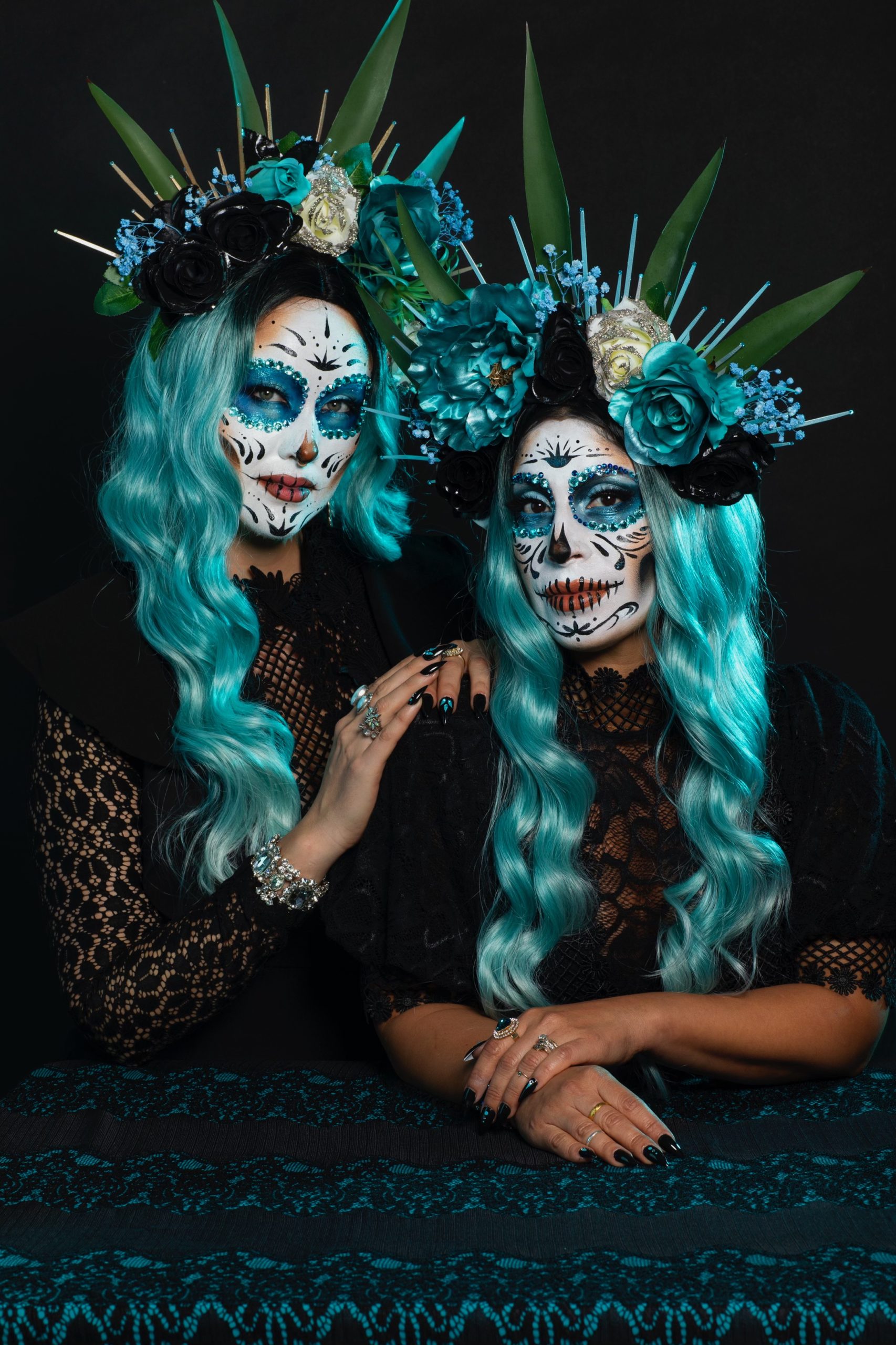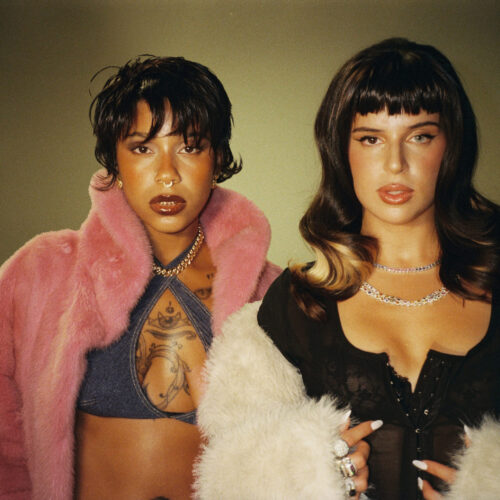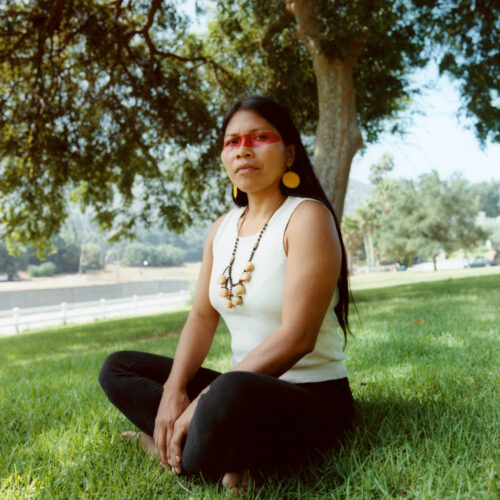When ancient Nahuas wanted to honor those who had passed away, they marked the season with a special day that we know today as Día de los Muertos — The Day of the Dead. The holiday, celebrated on Nov. 1 and 2 across Mexico and Latin America, is a time for families to reflect on and celebrate the souls of their ancestors with food, drink, photos and laughter. While many people associate the holiday with gaiety, Día de los Muertos is rooted in contemplation of the afterlife and traditions passed down from the Nahua worldview of space and time and Aztec mythology.
When a person died in pre-Columbian times, it was believed they would travel to Mictlán, the Land of the Dead. Polytheistic Aztecs did not hold the belief of reaching a singular paradise after death, instead, they believed that all individuals reached the same Mictlán destiny. This underworld was thought to be divided into 9 treacherous levels, the lowest of which was inhabited by the Aztec god of death Mictlantecuhtli and his wife Mictecacíhuatl. Only after overcoming the challenging tests and trials of each level, a journey that would last 4 years, could the person’s soul finally reach Mictlán, the final resting place. Family members would provide food, water, and tools to aid the deceased in that arduous journey. This ritual is known today as ofrendas.
These ofrendas honor the deceased by highlighting their favorite foods, trinkets, photos and other items that reflect the life they led. Moreover, people include symbolic objects like calaveras, cempasuchil bright marigolds and papel picado in their elaborate altars. Each carries meaning – the calaveras represent death; the papel picado represents the wind helping souls make their way home; and the cempasuchil bright marigolds represent a strong scent believed to help guide souls’ home.
The Aztecs believed that death was a natural part of the life cycle. In their eyes, it was something to face head-on, and even honor, through rituals. It is no surprise that this celebration for those who have passed, spanning back 3,000 years, is still relevant, honored by both young and old Latines. Día de los Muertos supplants the notion that death should be taboo, replacing it with a different perspective: that death is a part of the cycle of life, and therefore a celebration of life itself.
In recent years, the tradition has reached the mainstream with the flick Coco, which introduced audiences to the main character Mamá Coco and depicted her passing into the afterlife with grace and honor. That the holiday has reached the mainstream is perhaps predictable. Legend has it that Día de los Muertos marks an occasion when the spiritual world and real world collide as one. Moreover, the film is rendered in sumptuous color and depicts well the vibrant artifacts accompanying the holiday, from calaveras (skulls) and calacas (skeletons) to holiday figures like La Calavera Catrina.
According to Stanley H. Brandes, an Anthropology Professor at UC Berkeley and expert on Mexico’s Day of the Dead from a historical and ethnographic perspective: “Cranial and skeletal images of death have become virtually synonymous with Mexico itself.” Though calaveras have been widespread in Mexican folk art since Pre-Columbian times, it is thought that their vast popularity today stems from the work of late 19th-century Mexican printmaker and political cartoonist José Guadalupe Posada.
Throughout the late 1800s and early 1900s, Posada produced calavera illustrations and poems that were not only critical or satirical but also eulogistic and festive. His most iconic rendering, the fictional La Catrina character — which we often see in black and white face paint, adorned with elaborate dresses, flowers, hats and more — carries unique historical significance. Borne of Posada’s artistic mind, this 1910 illustration of an elegant skull, dressed to the nines, was regarded as satire. Like many political cartoons of the time, La Catrina was printed on chapbooks and prints and captured the imagination of the Mexican masses, and offered quick insights into contemporary affairs. According to art historians, La Catrina thus bears reference to the high-society obsession with European customs, as well as to Mexican then-leader Porfirio Diaz, whose corruption ultimately led to the Mexican Revolution, a long bloody battle from 1910-1920.
Although Posada did not invent the calavera, his artistic representations of skeletons dressed up humorously and engaged in everyday activities popularized this cartoon throughout Mexico. Since his death in 1913, Día de los Muertos evolved into a national holiday intrinsically tied with Mexican culture. By the 1970s, Mexico’s government had transformed the holiday into a cultural signifier that would attract tourism, including in many parts of the country that had never celebrated it before. In turn, Posada’s art style continues to influence the aesthetics of Día de los Muertos to this day. Look around your city and you will likely find a modern depiction of La Calavera Catrina, either embedded on your social media feeds or at your local festivals. You might even see her walking around your neighborhood.In addition to showcasing rich cultural heritage and history, Día de los Muertos allows Mexicans and Latin Americans to contemplate the cyclical nature of death. Each year for two days, the holiday galvanizes unique rituals like ofrendas and altars to the dead and prompts creative interpretations of the Day of the Dead’s unique calavera and calaca imagery. This holiday also makes possible an endless display of Latine creativity — from makeup artists to painters — inspired by historical practices and iconography passed down from the Pre-Columbian and Pre-Mexican Revolution eras.
##
Latina partners with el Jimador to celebrate Día de los Muertos 2021. As part of this partnership, el Jimador tapped Salt Spell founder Mariana McGrath and Andrea Ortega Costigan to create a La Catrina makeup look in celebration of Día de los Muertos. The sought-after makeup artists collaborated with beauty influencer Blanca Garcia aka Evette XO to explore traditional calavera aesthetics with contemporary embellishments. On Nov. 1, Latina sat down with Salt Spell and Blanca Garcia to talk beauty, confidence, and Mexican culture. On Nov. 2, Latina explores the Pre-Columbian beliefs and Pre-Mexican Revolution iconography that shaped Día de los Muertos.









